A small child tries to moves a large rubber toy placed on the ground. The toy does not move but gets deformed under her pushing force (→F) which is obliquely upward as shown. Then
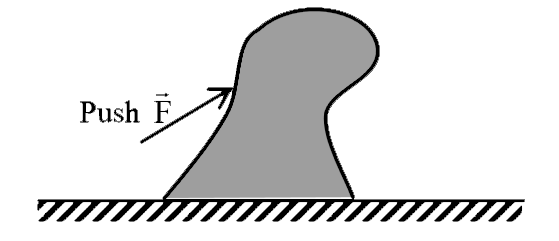
the resultant of the pushing force (→F), weight of the toy, normal force by the ground on the toy and the frictional force is zero
the normal force by the ground is equal and opposite to the weight of the toy
the pushing force (→F) of the child is balanced by the equal and opposite frictional force
the pushing force (vacF) of the child is balanced by the total internal force in the toy generated due to deformation
The correct Answer is:A
Step by step video, text & image solution for A small child tries to moves a large rubber toy placed on the ground. The toy does not move but gets deformed under her pushing force (vecF) which is obliquely upward as shown. Then by Physics experts to help you in doubts & scoring excellent marks in Class 12 exams.
Topper's Solved these Questions
Similar Questions
A boy tries to push a truck parked on the roadside. The truck does not move at all. Another boy pushes a bicycle. The bicycle moves through a certain distance. In which case was the work done more : on the truck or on the bicycle ? Give a reason to support your answer.
View SolutionWhen we try to push a heavy box kept on ground, it does not move at all. Which force is preventing this box to move forward ? Where does this force act ?
View Solution
Knowledge Check
- Question 1 - Select One
A particle of mass m moves from A to C under the action of force →F=2xyˆi+y2ˆj , along different paths as shown in figure.
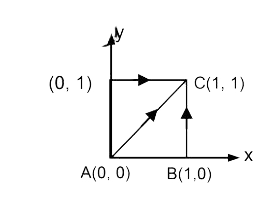 AForce is conservative in natureBWork done by force is 13 when particle moves along path ABCCForce is non conservative in nature and work done along path AC is 1 JDWork done along path ADC is 145J
AForce is conservative in natureBWork done by force is 13 when particle moves along path ABCCForce is non conservative in nature and work done along path AC is 1 JDWork done along path ADC is 145J - Question 2 - Select One
A bead of mass 12kg starts from rest from A to move in a vertical place along a smooth fixed quarter ring of radius 5m, under the action of a constant horizontal force f=5N as shown. The speed of bead as it reaches the point (B) is [Take g=10ms−2]
 A(a) 14.14ms1B(b) 7.07ms−1C(c) 4ms−1D(d) 25ms−1
A(a) 14.14ms1B(b) 7.07ms−1C(c) 4ms−1D(d) 25ms−1 - Question 3 - Select One
A 50kg person stand on a 25kg platform. He pulls on the rope which is connected to the rope which is attected to the plateform via the frictionless pulley as shown in the figure. The platform moves upwards at a steady rate if the force with which the person pulls the rope is
 A500NB250NC25NDNone of these
A500NB250NC25NDNone of these
A particle is placed on the top of a hemispherical shell of same mass. Shellis free to move on the smooth ground. If particle is given a given a gentle push and reaches to anglular position q as shown in figure then for an observer fixed on a shell, ratio of reaction force exerted by shell to peudo force (as observed from shell) acting on particale, is
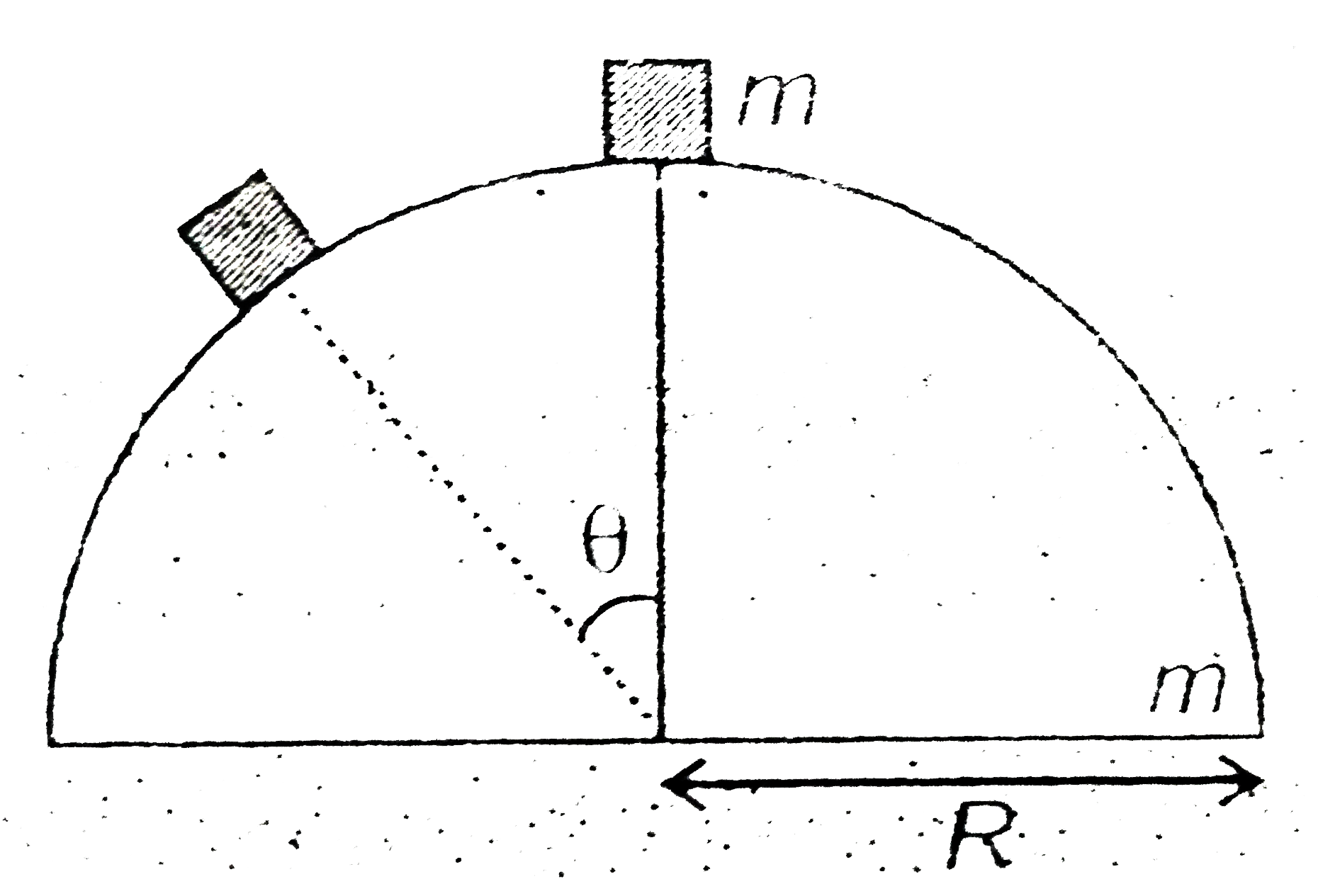 View Solution
View SolutionA large box, placed on the ground, has to be shifted up to a wall, as shown in the given figure. Three boys push the box together. They have to apply a large amount of force to move the box. The motion of the box is opposed by the frictional force between the box and ground.
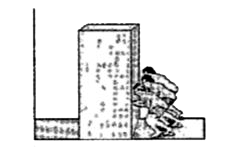
If wheels were present below the box, then they would have to applyView SolutionA large box, placed on the ground, has to be shifted up to a wall, as shown in the given figure. Three boys push the box together. They have to apply a large amount of force to move the box. The motion of the box is opposed by the frictional force between the box and the ground.
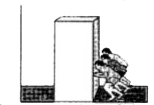
If wheels were present below the box, then they would have to applyView SolutionA large number of small identical blocks, each of mass m, are placed on a smooth horizontal surface with distance between two successive blocks being d. A constant force F is applied on the first block as shown in the figure

(a) If the collisions are elastic, plot the variation of speed of block 1 with time.
(b) Assuming the collisions to be perfectly inelastic, find the speed of the moving blocks after n collisions. To what value does this speed tend to if n is very large.View SolutionA ball of a mass m is connected to two rubber bands of length L, each under tension T as shown in figure . The ball is displaced by a small distance y perpendicular to the length of the rubber band. Assuming the tension does not change , shown that (a) the restoring force is −(2T/L)y and (b) the system exhibits simple harmonic motion with an angular frequency ω=√2T/mLs.
 View Solution
View Solution

